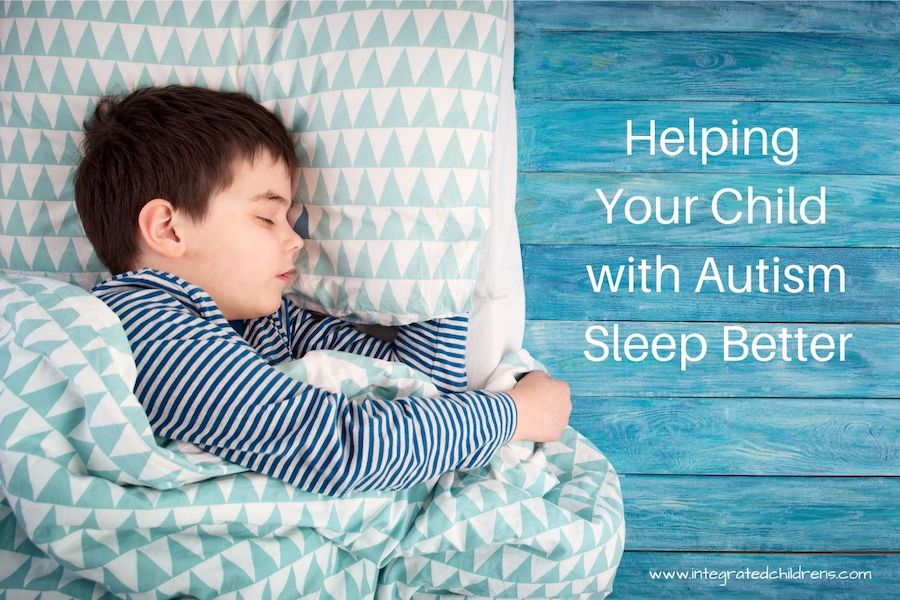With up to 4 in 5 children with autism experiencing chronic sleep challenges, it’s no wonder so many kiddos with autism (and their parents) are regularly tired. Here, we’ll explore why this phenomenon is so common, how it affects children with autism, and tips for helping your child sleep better.
Why do so many children with autism struggle with sleep?
While more research is needed, studies so far point to several theories for why autism disrupts sleep:
- Coexisting conditions such as gastrointestinal problems, ADHD, anxiety, repetitive behaviors, or sensory sensitivity to light, sound or touch.
- Medications, such as those for ADHD, which have stimulating effects.
- Possible mutations in genes that control the sleep-wake cycle, cause insomnia, or affect levels of the natural sleep hormone melatonin.
How do sleep issues affect children with autism?
Poor sleep has negative consequences for everyone, but research shows that for children with autism it can exacerbate:
- Challenges with social communication
- Repetitive behaviors
- Hyperactivity
- Distractibility
- Behavior problems
How can parents help their children with autism sleep better?
Below are several things that might improve your child’s quality of sleep.
Pediatrician Chat
Ask your pediatrician to help you rule out conditions, such as sleep apnea, that may be contributing to poor sleep. You can also ask about supplements. While many experts agree that sleep medication can create further issues in children with autism, some parents find that using supplements such as melatonin help their children sleep.
Stimulation Check
Children with autism may be more sensitive to factors such as lights, sounds, and textures. Consider whether things like blackout curtains, white noise, or different pajamas might improve their sleep.
Screen Free Hour
The light from electronic devices can disrupt sleep, so for children with sleep challenges it’s especially important to avoid screens for at least an hour before bed.
Skip Caffeine
Remember that caffeine can be in food and drinks such as chocolate or certain teas.
Bedtime Routine
Because children with autism may not pick up on social cues signaling bedtime, such as a darkening sky or siblings putting on pajamas, a consistent bedtime routine can help them understand that it’s time to down-shift for sleep. Keep the routine relatively short (15 minutes for young children and no more than 60 minutes for older children). If activities such as bathing are stimulating for your child, do them earlier in the day. Try making the last step relaxing, such as reading or rubbing their back. Use visuals, such as a schedule (pictures or written), to reinforce the sequence of steps. The key here is consistency – it’s important to do the same things in the same order each night.
Consistent Sleep/Wake Times
This can be hard, especially if your child is sleeping in, but for overall better sleep, it’s best to stick to consistent sleep and wake times.
Independent Falling-Asleep Skills
All children can develop dependencies on sleep crutches such as falling asleep with a parent lying in the bed. For children with autism, who may wake frequently in the night, it’s important that they know how to fall back asleep on their own. Two strategies we like for this are:
- Gradually move further and further from your child’s bed each night, still staying in the room, until you can leave when they are very drowsy but still awake.
- Implement “Bedtime Passes” – a small handmade card that they can use (1 per night) for a check-in, hug, song, etc. If they don’t use a bedtime pass, they can earn a reward, but they know they always have one for times when they feel sad or lonely.
Daily Movement
Ensuring that your child is active each day can contribute to better sleep. Just be sure it’s not too close to bedtime, as that can have the opposite effect.
Lastly, remember that it can be overwhelming to make changes, so start with one or two things that make sense for your family. Give them a few weeks, evaluate their effectiveness, and then add additional items or shift gears.


Recent Comments